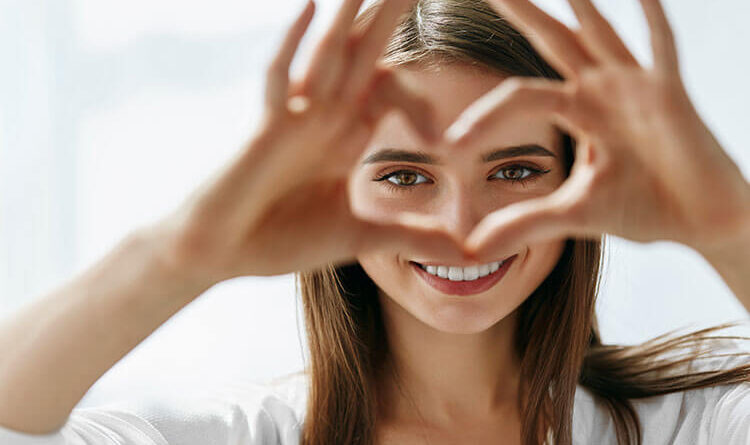Are you a victim or know someone who is a victim of bumps or small pimple-like growths directly under the eye, feel embarrassed about them and want to know how to get rid of milia under eyes? Yes, the chances are that such a person could be a victim of milia under eyes. No doubt, having any interference with the normal features of one’s face or body could be not only discomforting but pose some form of embarrassment to you.
The US skincare industry, for instance, accounts for 36.4% of the cosmetic market, making it the largest share of the entire market. With as much as $62.46 billion spent in 2016 as revenue for the US cosmetic industry alone, it goes to show how much value people place on their looks, particularly their skin. And I must say, Milia under eyes can be a threat to good looks. So, let’s take time out now to do an understudy on milia under eyes, causes and what we could do to prevent or remedy an occurrence.
1. What Are Milia Under Eyes?
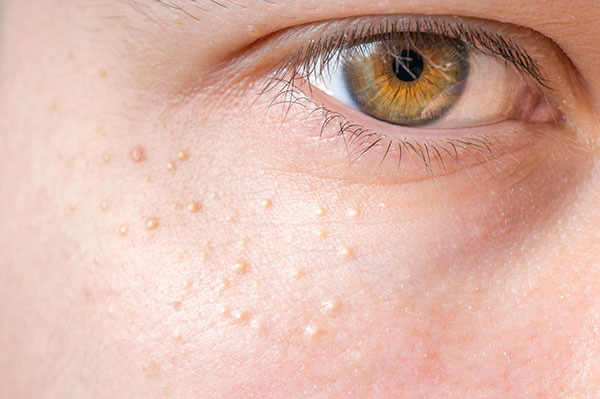
You could also refer to milia as Milium Cyst alternatively. It is the presence of whitish bumps around an individual’s nose, cheeks, eyelids and such locations close to underneath the eyes. In most cases, the cysts do not come singly but in a group known as milia.
Milia are small cysts or bump that looks like a dome and comes in either white, yellow or your skin color. The good thing is that they do not result in pain or itchy feeling, though could be irritating sometimes.
2. What Causes Milia Under Eyes?

Milia under eye are as a result of the trapping of keratin, a protein substance usually under the nail, skin or hair cells under the skin. Such milia caused by the result of the trapping of keratin could be referred to as primary milia which occur in children and adults. New-born babies commonly suffer from milia known as the neonatal milia but are usually confused as baby acne and Epstein pearl.
However, milia under eyes affect all ages without restrictions. And it occurs as a result of some form of damage done to the human skin cell. Likely causes could include:
A. Skin burns
B. Poison ivy and other injuries or blisters
C. Skin procedures
D. Exposure to steroid creams
E. Excessive sun exposure
Juvenile Milia
Juvenile milia occur only amongst adolescents and pre-teens with genetic disorders such as Gardner syndrome, Bazex-Dupre Christol syndrome, etc. Juvenile milia share similarity with milia en plaque, which is as a result of auto-immune skin condition or disorder such as discoid lupus, etc. However, milia en plaque occur more amongst middle-aged women.
Milia could occur due to traumatic conditions or as an allergic reaction to the use of drugs (steroids) can result in milia under eyes which are all secondary milia.
3. Sign/ Symptoms Of Milia Under Eyes
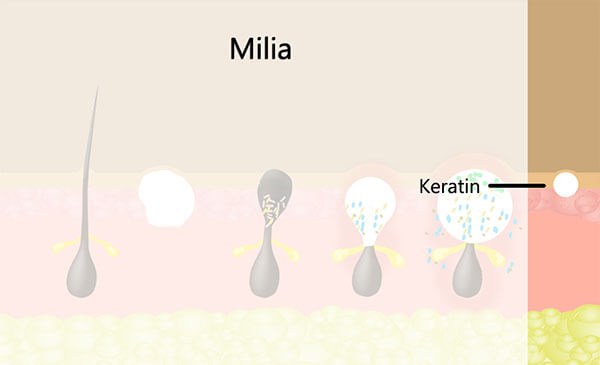
A. Skin blister
B. White milia under eyes
C. Whitish bumps or yellowish bumps under eye area
D. Burns and skin rashes
E. Kertain.
RELATED: How To Get Rid Of Bumps On Face: 5 Most Effective Ways To Treat
4. Facts About Milia Under Eyes
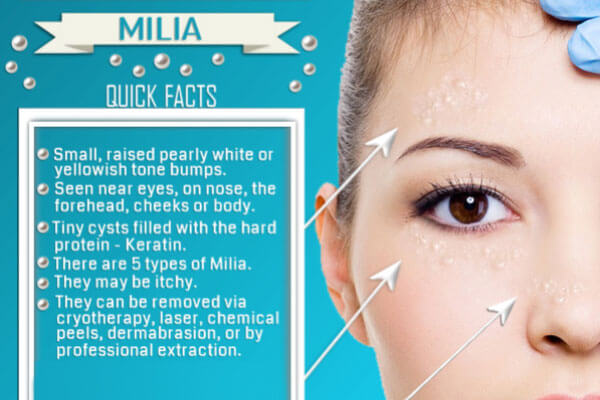
The first thing to note is that Milia could be entirely harmless and you do not need to break a sweat if you discover you or a loved one experiences milia.
Milia occurs in as much as 40% of new-born babies as reported by the Standford School of Medicine.
It is about the most common skin reactions known to man that does no real harm and caused by blocked pores due to keratin.
For milia under eyes treatment, usually, it should fade away within 2-4 weeks for infant and 2-4 months for adults and adolescent even without medication. So if you could be patient enough you would be fine without cosmetic products or drugs.
Though harmless, how about not experiencing them at all? Yes, milia can be prevented. Let’s look at prevention.
5. Preventive Measures Against Milia Under Eye
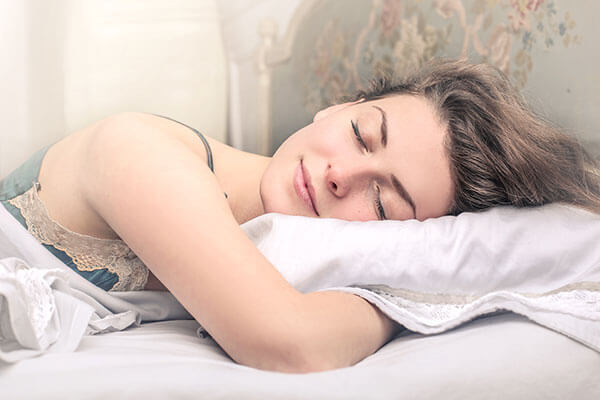
A. Stay Away From Oil-Based Moisturizers
One of the known causes of milia has to do clogged pores and heavy oil-based moisturizers or cream or oil-based makeup removers can lead to clogging of the pores or milia at last.
B. Sleep Light
It will help to wipe off all makeup from your eyes and face before going to bed to reduce the chances of milia occurring.
Note that the best milia under eyes treatment should be prevention.
6. Remedies Or Curative Measures Against Milia Under Eye
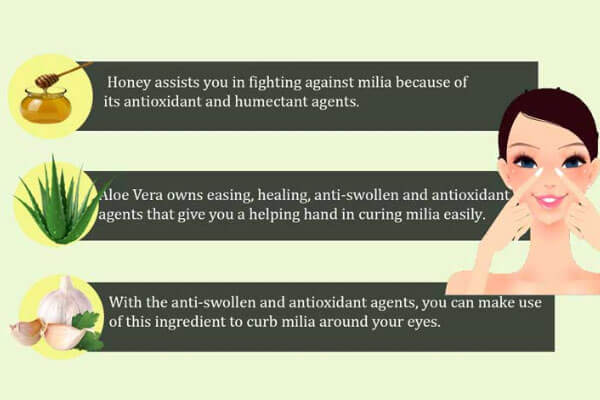
Overreliance on skin care products could trigger skin allergy or reactions and more so my first recommendation would be to allow it heal on its own. The good news though is that milia under eyes do not require much to treat. Anyway, on how to get rid of milia under eyes you could try this:
Exfoliation
Exfoliation provides one of the best ways to get rid of milia under eyes to the opening of blocked pores or preventing its reoccurrence in the first instance.
Procedure:
- Steam your face by pouring hot water in a clean bowl or sink and use a towel to cover your head and allow the steam sooth or caress your face.
- Use any gentle scrub product to exfoliate the affect skin area to help expose the dead skin cell. Please be careful when exfoliating around the eye area or other sensitive skin areas.
- Apply cosmetic products containing glycolic acid and salicylic acid for treatment as well as to prevent reoccurrence of the milia.
7. Other Remedies To Milia Under Eyes
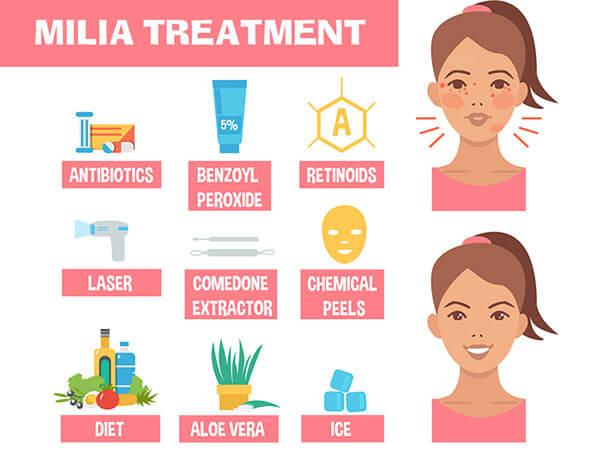
A. Opening small cyst
Though not recommended except you can handle sharp objects or have knowledge with medical matters, it is possible to use a sterilized needle and a comedone extractor to open up small cysts or carry out a lancing procedure to remove milia.
B. Retinoid
Using best eye cream or products containing salicylic acid, glycolic acid, vitamins A, and E could provide relief from the problem of milia fast.
C. Medical Procedures
Use Chemical peels: Using chemical peels involves meeting a physician who would apply phenol, Alpha Hydroxyl Acid (AHA) and trichloroacetic Acid (TCA) to the affected areas to peel off bumps. It also helps to smoothen skin texture.
You could approach a medical lab or dermatologist to carefully diagnose and then expose the cyst by carrying out a laser ablation procedure on the eye area or affected parts. Alternatively, to remove milia, a diathermy involving extreme heat could help get rid of the milia. The third option, Cryotherapy is the most commonly used method for dealing with milia under eyes medically. It is a process involving the use of frost in eliminating milia.
It is also helpful to understand your skin type as some chemical products or creams could result in skin tone further leading to sun exposure or skin damage. And the dead skin cell on the skin surface could result in a clogging of the pores and hair follicle.
Being a common occurrence, allowing milia under eyes to heal itself could provide one of the best ways to get rid of milia under eyes but exfoliation provides an excellent option too. However, when dealing with a severe and prolonged case, allowing milia to heal or exfoliating might not be the key. Understanding whether it’s an allergic reaction or finding out the triggers could be helpful. Ultimately, therefore, I recommend seeking medical advice to know what exactly you are dealing with and best measures to take to recovery.
“Hope you find the post helpful and we are excited to hear what you think of it!”

